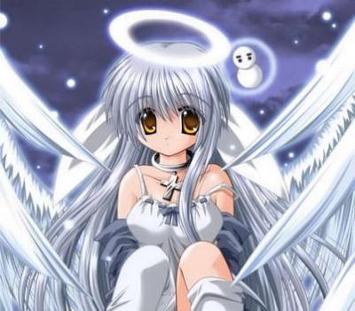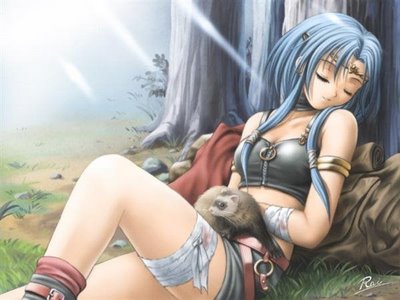skip to main |
skip to sidebar

Anime
In English, main dictionary sources define anime as "a Japanese style of motion-picture animation" or "a style of animation developed in Japan". Since anime or animçshon is used to describe all forms of animation, Japanimation is used to distinguish Japanese work from that of the rest of the world.

Anime
In more recent years, anime has also frequently been referred to as manga in European countries, a practice that may stem from the Japanese usage: In Japan, manga can refer to both animation and comics (although the use of manga to refer to animation is mostly restricted to non-fans).

Anime
Anime often draws influence from manga, light novels, and other cultures. Anime can be broadcast on television and is widely distributed via any form of media presentations, such as DVD, video and the internet. Anime is sometimes referred to as Japanimation, but this term has fallen into disuse

Anime
When it comes to the countries that are outside of Japan, the word is known to most popularly refer to the animation that originates in Japan.

Anime
However, if you travel to the west you will find that the word anime is not always considered as referring to animation but it is thought to be a subset of animation.

Anime
Anime is available outside of Japan in localized form. Anime has also been a commercial success in Asia, Europe and Latin America, where anime has become even more mainstream than in the United States.

Anime
Anime features a wide variety of artistic styles. There is some anime that is drawn by hand however there is also some that is computer assisted animation which has actually became very popular over the years.

Anime
Anime or manga tends to be targeted at teenage or young male adults. Anime is often considered a form of limited animation. When it comes to anime, it is just like any other entertainment medium in which the actual story lines are used to actually represent the major genres of the actual fiction.

Anime
There are many ways that you can watch anime because of the fact that it is broadcasted on television as well as distributed on media that is often known as DVD as well as VHS and it is also included in the video games that are played by adults as well as children.

Anime
There is some anime that is even produced as motion pictures that are full length. It is known that anime actually draws its influence from what are known as manga as well as light novels and certain other cultures as well.

Anime
There have also been some anime storylines that have actually been adapted into what is known as live action films as well as television series.

Anime
The actual history of anime is known to have begun in the very beginning of the twentieth century. This was the actual time that the Japanese filmmakers were experimenting with the techniques of animation. This type of animation was also at that time being experimented with in other countries such as France and Germany as well as Russia and the United States as well.

Anime
As a result of this work and that of other pioneers in the field, anime developed characteristics and genres that are fundamental elements of the art today.

Anime
Anime became very popular in Japan because it provided an alternative outlet for the art of storytelling. In sharp contrast when compared to the undeveloped industry of live action that was currently being used within Japan.

Anime
In the United States as that time the live action industry had a generous budget, whereas the country of Japan had a small market and they also suffered from budgeting problems as well as location and not to mention the restrictions that were placed on the casting.

Anime
Anime-influenced animation refers to non-Japanese works of animation that emulate the visual style of anime. Some authorities say that Anime is closely related to the Japanese comics, called manga. Anime also tends to borrow many elements from manga including text in the background, and borrowing panel layouts from the manga as well.

Anime
Many anime series got their start as popular manga. Anime is often thought provoking and provides an excellent foundation for raising important issues with your children. Some anime storylines have been adapted into live action films and television series

Anime
Anime burst onto the scene in September of 1963, when NBC syndicated a dubbed version of the Japanese series Astro Boy. Robot anime like Gundam and Macross became instant classics in the 80s, and the robot genre of anime is still one of the most heard of in Japan and worldwide today.

Anime
In the 1980s, anime was accepted in the mainstream in Japan, and experienced a boom in production (It should be noticed that, manga has significantly more mainstream exposure than anime in Japan). The mid-to-late '90s, on into the 2000s, saw an increased acceptance of anime in overseas markets.

Anime
There are many books available that can help in perfecting the anime drawing style. Such books come complete with information and instructions on the styles used in anime.

Anime
A common approach is the large eyes style drawn on many anime and manga characters, credited to the influence of Osamu Tezuka, who was inspired by the exaggerated features of American cartoon characters such as Betty Boop and Mickey Mouse and from Disney's Bambi.

Anime
Although not all anime have large eyes many western audiences associate anime with large detailed eyes as many shounen or boy comics and shoujo young girl comics depict their characters with large eyes.

Anime
Other stylistic elements are common as well; often in comedic anime, characters that are shocked or surprised will perform a "face fault", in which they display an extremely exaggerated expression.

Anime
In anime the lines are often influenced more from a stylistic look from brushwork, rather than that of the calligrapher's pen. This is best demonstrated in the anime Karekano.

Anime
The anime may also be edited to alter cultural references that may not be understood by a non-Japanese person and certain companies may remove what may be perceived as objectionable content.


































